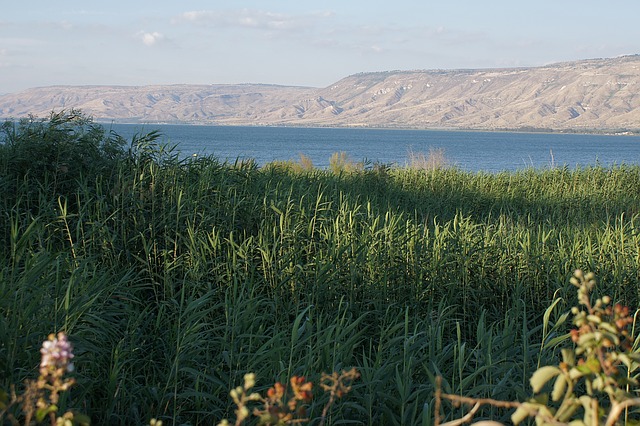Tracing the steps of Jesus
The Gospel sites
Getting to know the places in the Gospel is a way of getting closer to the evangelizer, and acquiring a deeper understanding of the allusions of his discourses and the geographic and historical ambience in which his drama came about. And Bishop Piero Rossano acknowledged, in commenting on the book of Wolfango E. Pax, “Where He passed”: «the reader is put in the condition of becoming a contemporary of Jesus and tracing his earthly life step by step».
One reviews and better understands Jerusalem, the city of David, perpetual centre of peace and war, with its alleys and streets pulsing with masses, as when Jesus mixed with the people to free it. Diggings, ruins, new buildings, Christian temples, and ancient walls help to revive the Messiah’s mission in modern times.
All around are signs of the destructions of war and struggling reconstructions, amid which people who have come from afar (if we thought of the Crusades and their varieties and succession) recall the existence of the Saviour in the external aspects of cities and countrysides, so much so that he reappears not only in the event that culminated in Calvary, but also in the history of the centuries which confirmed “the sign of contradiction.”
The Palestines
The Palestineians are a «reserved people that do not easily show their own feelings. A laugh is never heard, and we have never heard about Jesus laughing; nor did he smile as he looked at the young boy who sought eternal life and showed him his deep affection.»
On the mountain slopes close to Capharnaum, Jesus proclaimed the charter constituting the new order: the order of charity, made up of beatitudes, so simple yet elevated. Today, a temple overlooking the lake with its indescribable beauty, reminds us of the humble, solitary place where that discovery of God through love, peace, and purity was announced. The humble people who listened to those words through which religion, before being a rite, became a rebirth of the soul and dialogue with God and love for the brother, had the courage to say to the priests who, against that revivor of life, meditated on his death: «No man has ever spoken like him.»
The pool of Siloe
The pool of Siloe is still sacred for the Christians, Muslims and Jews: so in the new vision of things, also a pool may serve to reconcile men and women who for centuries have hated and attacked one another.
In the same way, the Easter festivities still today reconcile, conserving its immediate value. In Jesus’s time «the date of Easter varied: according to the data furnished by John and the sources of Qumran, we have to imagine that Jesus celebrated the feast with his disciples a few days before the official date.»
Now also in the Cenacle where the greatest mystery was celebrated, three religions met – the Jewish, Muslim and Christian faiths, in a spirit of veneration and adoration for the same God, with the conscience of the same obligations assigned to ancient Israel and to those who prolong the destiny of these people. Among the commitments connected to Easter, the Cenacle reminds, above all, of the Eucharist, prior to the passion of Christ and redemption.
The view of Jerusalem
The view of Jerusalem with the twisted branches of olives, as it is today, arouses crude impressions of the spasmodic agony of the Lord. At the “Wailing Wall,” the bells of the churches rang the Angelus, «announcing the good news that Jesus of Nazareth does not belong to the past, but lives among us. The Orthodox Jews pray before this wall for the peace of their country, after one hears the call of the muezzin inviting all to prayer.»
The old becomes present in religion, as all ages are present in God. Here the presence of the past centuries makes us feel secure – and address the future centuries. In these places, we participate realistically and authentically in the suffering and resurrection of Christ: sufferings to which we are associated to participate in a resurrection that is more radiant, the gloomier the aspects of modern-day cult of death are.
Igino Giordani, «New City», April 1971, n.7, p.17,18,19.




